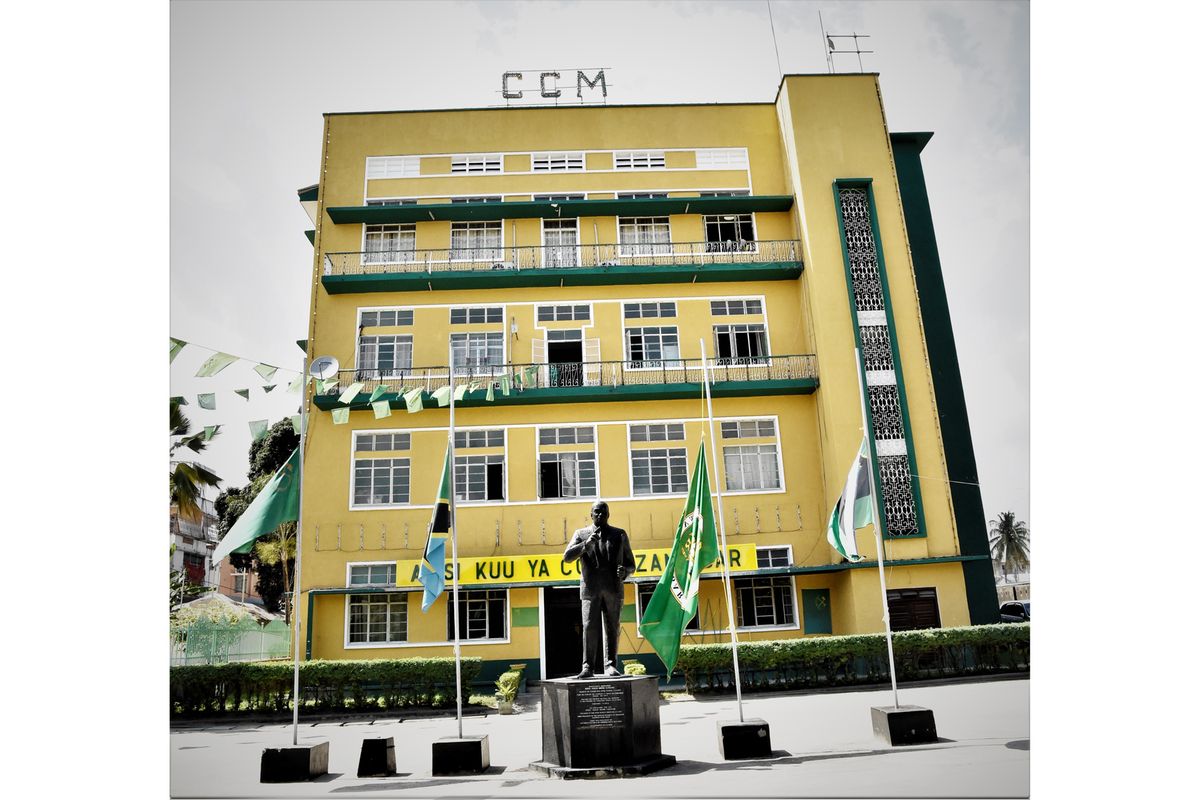Note: If you yearn to experience classic and modern African music in person on the continent, consider joining Afropop Worldwide’s, February 2025 Music and Culture Tour of Tanzania and Zanzibar. Details here!
The early rumba bands of East Africa, particularly Tanzania, have often been overlooked in the wave of classic Afropop reissues in recent decades. (Fine collections by Douglas Patterson and Werner Graebner are clear exceptions, but they are few in comparison to volumes of early Congolese rumba or West African funk reissues.) This scarcity is partly due to the fact that Tanzania in the Independence era (1950s and 60s) did not have a real recording industry. Most of the recordings made by these exceptional bands were done in state radio stations, and most of those tapes have long since been lost to history. So here comes a set of 17 commercially recorded Tanzanian tracks from the late ’60s to help fill in the gap, and it could not be more welcome.
Politics helped to keep this delightful music obscure. Julius Nyerere’s Ujamaa (Swahili for “fraternity”) philosophy emphasized social, even socialist, cohesion over commercial development. Though Ujamaa would ultimately prove an economic failure, its early years were peaceful, and that easy going vibe is one thing that distinguishes these recordings from Congolese rumba of the same era. These bands did not rely on recordings, but rather on frequent, live performances, and later, government and other official sponsorship. They played constantly, and the tightness and polish we hear on these tracks can’t be achieved any other way.
As compilation producer Rob Allingham–a longtime friend of Afropop Worldwide based in Johannesburg–explains in the sleeve notes, Cuban son and cha-cha-cha recordings made a big splash in Tanzania starting in the 1930s, just as they did in West and Central Africa. Local imitations blending Tanzanian traditions and sung in Swahili began immediately, well before Congolese rumba swept the continent. It was only after 1960 that prominent Congolese musicians like Remy Ongala fled war and chaos to establish bands in Dar Es Salaam, Kampala, Nairobi and other East African cities. These Tanzanian recordings from the late ’60s emphasize the local sound, a genre often called muziki wa dansi (dance music), though some connoisseurs prefer the more descriptive term Swahili rumba.
Allingham organizes these tracks as a kind of “battle of the bands” with six bands each taking turns with two to five tracks. They are all gems, but if I had to pick a winner, it be Nuta Jazz, with Atomic Jazz Band as the runner-up. But let’s go through them.
Salum Abdalla got his start as a singer in Koranic school, but soon fell for Cuban son, and formed his band Cuban Marimba in 1952. By the time of these recordings, Abdalla had died in a car crash, and Juma Kilaza was leading the band. Organic arrangements, beginning in one tempo and pivoting mid-way to a faster tempo, is a feature of Cuban dance music that gets developed in many varieties of African rumba. Here, in the stinging guitar work, we can tease out the phrasing of marimba traditions from the Mogorogoro region where this band was formed. The song “Afrika Muye Muye,” from which this compilation takes its title, is particularly lively in both its tempos. A song lamenting division in Africa–“We don’t even know how to work together”–this is the most serious of all these tunes from a lyrical perspective. It’s a theme with a long history in African music ever since. Elsewhere, we mostly get angst-ridden love stories, about which more later.
Next, we have Tanzania Jazz Band and L’Orchestre Spear, each with two sharp, spare tracks featuring lyrical melodies and tricky guitar work. The interplay between lead and rhythm guitar parts is notably prominent in these tracks; nothing gets buried. Vocals are generally delivered by two or more singers in unison. Might this be an influence from Arabic music, where unison singing is common? In any case, it’s a characteristic feature.
Nuta Jazz, with five tracks here, marks the beginning of the era of state-sponsored bands. Named for the national trade union association, this band added brass to the lineup and became hugely influential. The band’s name changed three times over the years, as the national politics evolved. Since 1979, they’ve been an independent outfit under the name Msondo Ngoma. From the start, Nuta incorporated musical influences from the Zaramo ethnic group around Dar Es Salaam. The brass work on the first three tracks here is particularly tasty. By the way this is the only band from the early Swahili rumba era to survive today, with excellent young players continually refreshing the sound.
By the way, you can experience Msondo Ngoma and contemporary Swahili rumba bands live in Dar Es Salaam as part of Afropop Worldwide’s, February 2025 Music and Culture Tour of Tanzania and Zanzibar. Details here!
Morogoro Jazz Band gets four tracks. This outfit grew in popularity through the ’50s and ’60s, and in the ’70s it was joined by Mbaraka Mwinshehe, destined to become the most popular singer in East Africa. In these recordings, he’s the singer, composer and lead guitarist. Unison saxophone and lead guitar adds a distinctive touch to these tracks, although the lyrics tend to the dark side of romance: “I’m tired of you,” “You will destroy me.” On “Sitaki Tena,” Mwinshehe sings, “She was like an itch on my mind/Now I don’t feel anything anymore/Let me just be on my own, catering for myself/Enough! I don’t want anymore.” A bitter pill in a sweet sauce! On “Lucia Rudi (Lucia come back),” both the vocal and guitar performances palpably plead for the return of a lost lover.
Finally, we get two crisply recorded tracks from Atomic Jazz Band formed by Haj Juma and Julius Kiluwa in Tanga’s Swahili Street quarters in 1954. The fact that this band had its own club helped to make it one of the most popular combos of the era. All these years later, the jousting between tart guitar and sax lines and those passionate unison vocals give us a potent echo of a glorious time.
Source: allafrica.com













